Apps
Auto Added by WPeMatico
Auto Added by WPeMatico
If you’ve spent any time on TikTok lately, then you’ve probably seen a number of Popl’s ads. The startup has been successfully leveraging social media to get its modern-day business card alternative in front of a wider audience. Packaged as either a phone sticker, keychain or wristband, Popl uses NFC technology to make sharing contact information as easy as using Apple Pay. To date, Popl has sold somewhere over 700,000 units and has generated $2.7 million in sales for its digital business card technology.
Popl co-founder and CEO Jason Alvarez-Cohen, a UCLA grad with a background in computer science, first realized the potential for NFC business cards through a different use case — a device he encountered in someone’s home while attending a party. But it sparked the idea to use NFC technology for sharing information person-to-person, which would be faster than alternatives, like AirDrop or manual entry. And so, Popl was born.
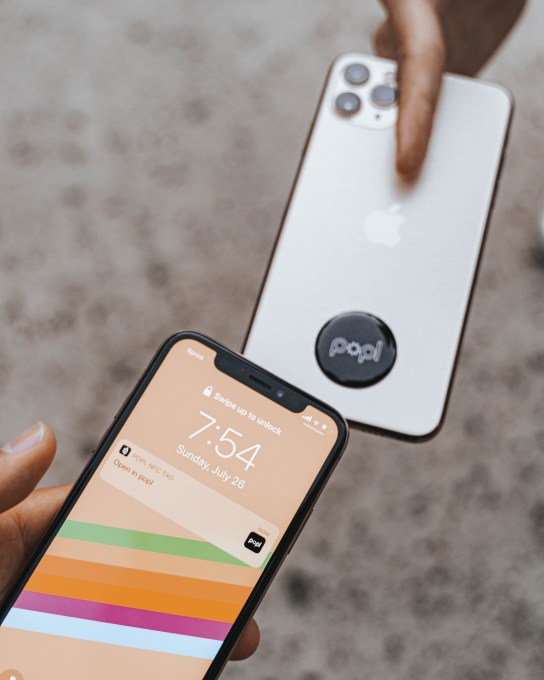
Image Credits: Popl
Though startup history is littered with would-be “business card killers” that eventually died, what makes Popl different from early contenders is that it combines both an app with a physical product — the Popl accessory. This accessory can be purchased in a variety of form factors, including the popular Popl phone sticker that you can apply right to the back of your phone case (or even the top of your PopSocket), and customized with a photo of your choosing.
“I knew that, in the past, people would tap phones and share information like that. But I learned quickly that you can’t do this just phone-to-phone with pure software,” says Alvarez-Cohen. “So I [wondered to myself], what’s the closest way we can get the phone tapping? And that’s how I came up with this back-of-the-phone product.”
Each Popl accessory is actually an NFC tag which enables the handoff of the user’s contact information. When the phones are close, the recipient will get a notification that alerts them to your shared Popl data.
There are, of course, other ways to quickly exchange contact information. You can easily enter in someone’s digits into your phone’s contacts app directly, for example, which may work better for more casual encounters — like meeting someone at a bar. But Popl lets you share a full business cards’ worth of contact data with just a tap, which makes it better for professional encounters, or any other time you want to share more than just your phone number.
While the Popl tags make for a nice gimmick, the Popl mobile app is what makes the overall service useful. And to be clear, the app is only necessary for the Popl’s owner — the recipient doesn’t need the app installed for Popl to work. They will, however, need to have a phone that can read NFC tags, which can leave out some older devices. Or, as a backup, they’ll need the ability to scan the QR code the app provides as a workaround.
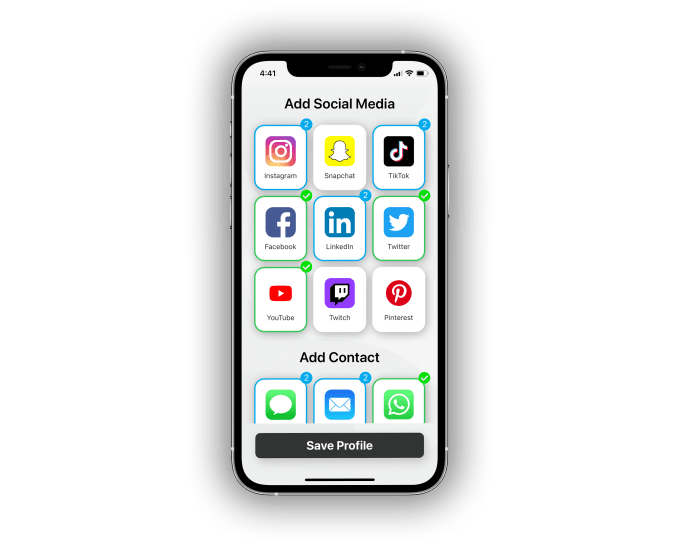
Image Credits: Popl
In the Popl app, you can customize which data you want to share with others — including your contact info, social profiles, website links, etc. — all via an easy-to-use interface. Like some business card apps in the past, you can flip between a personal profile and a business profile in Popl in order to share the appropriate information when out networking. To actually make the exchange of contact information with another person, you simply hold up your phone to theirs and they’ll get a notification directing them to your Popl profile webpage. (The phones don’t have to physically touch or bump together, however. It’s more like Apple Pay, where they have to be near each other.)
From the Popl website, that’s shared via the notification that pops up, the recipient can tap on the various options to connect with the sender — for example, adding them on a social network like LinkedIn or Instagram, grabbing their phone number to send a quick text, or even downloading a full contact card to their phone’s address book, among other things.
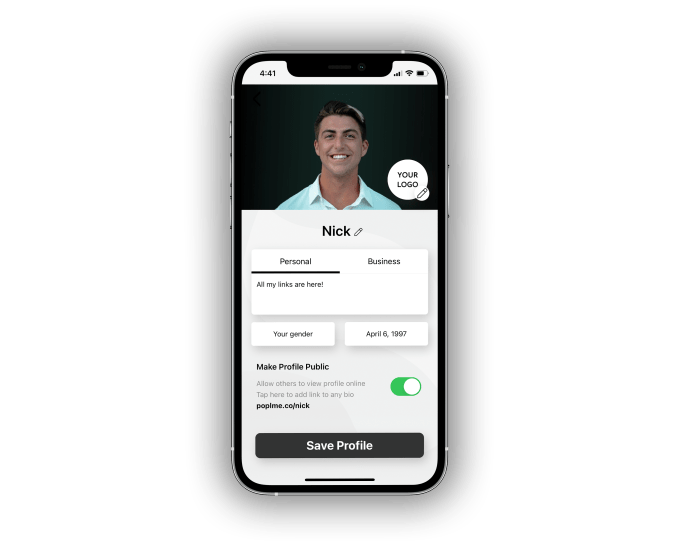
Image Credits: Popl
The app’s more clever feature, however, is something Popl calls “Direct.”
This patented feature won’t send over the Popl website where the recipient then has to choose how they want to connect. Instead, it opens the destination app directly. For example, if you have LinkedIn Direct on, the recipient will be taken directly to your profile on LinkedIn when they tap the notification. Or if you put your Contact Card on Direct, it will just pop your address book entry onto the screen so the user can choose to save it to their phone.
For paid users, the app also lets you track your history of Popl connections on a map, so you can recall who you met, where and when, along with other analytics.
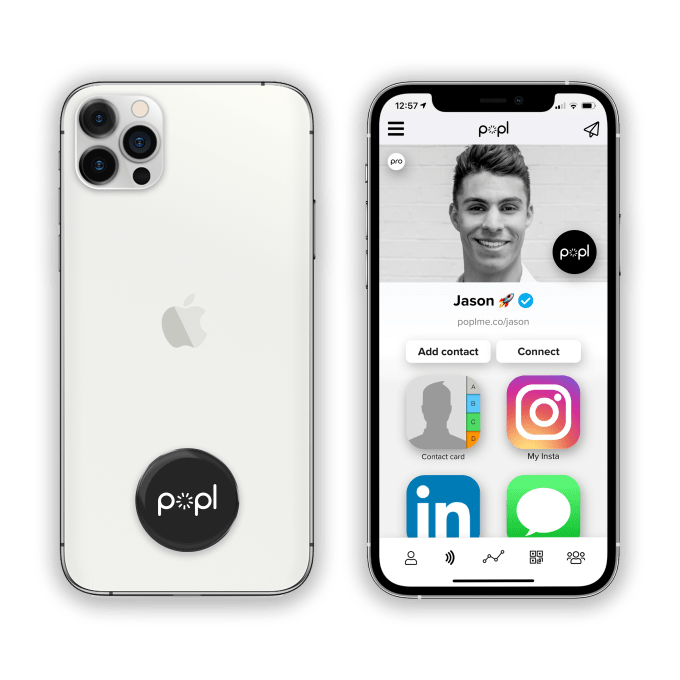
Image Credits: Popl
Work on Popl, which is co-founded by Alvarez-Cohen’s UCLA roommate, Nick Eischens, now Popl COO, began in late 2019. The startup then launched in February 2020 — just before the coronavirus lockdowns in the U.S. That could have been a disastrous time for a business designed to help people exchange information during in-person meetings when the world was now shifting to Zoom and remote work. But Alvarez-Cohen says they marketed Popl as a “contactless solution.”
“If I have this, and I have to meet someone for my business, I don’t even have to tap it — you can just hover, and it will still send that information,” Alvarez-Cohen says. “So I’m able to share my business card with you without handing you a business card, which is safe.”
But what really helped to sell Popl were its video demos. One TikTok ad, which I’m sure you’ve seen if you use TikTok at all, features the co-founders’ friend Arev sharing her TikTok profile with a new friend just as she’s leaving the gym.
In the video, the recipient — clearly dumbfounded by the technology after she taps his phone — responds “what? what? Whoa! What? How’d you do that?!”
It’s now been viewed over 80 million times.
Today, Popl’s TikTok videos get high tens of thousands, hundreds of thousands and sometimes still millions of views per video. The company also has an active presence on other social media. For instance, Popl posts regularly to Instagram, where it has over 100,000 followers. Today, the startup’s growth is about 60% driven by Facebook and Instagram marketing and 40% organic, Alvarez-Cohen says.
Now, the company is preparing new products for the post-pandemic era when in-person events return. Though it had before sold Popl’s in bulk for this purpose, it’s now readying an “event bracelet” that just slips on your wrist (and is reusable). The bracelet could be used at any big event — like music festivals or business conferences, where you’re meeting a lot of new people. And because Popl uses NFC, phones have to be close to make the contact info exchange — it won’t just randomly share your info with everyone as you pass by them.
Popl is also fleshing out the business networking side of its app with integrations for Salesforce, Oracle, HubSpot and CSV export, that come with its Popl Pro subscription ($4.99 per month). The in-app subscription is already at $450,000-plus in annual recurring revenue and growing 10% every week, as of early April.
A Y Combinator Winter 2021 participant, Popl is backed by Twitch co-founder Justin Kan (via Goat Capital), YC, Urban Innovation Fund, Cathexis Ventures and others angels, including Wish.com CEO Peter Szulczewski and PlanGrid co-founder Ralph Gootee.
The app is available on iOS and Android, and the Popl accessories are sold on its website and on Target.com.
Update, 4/19/21, 6:45 PM ET: Post updated with a more current revenue figure after publication.
Powered by WPeMatico
When I’ve written about Stationhead in the past, I’ve focused on how the startup aims to bring the personality and interactivity of a live radio broadcast to streaming music. But CEO Ryan Star said his ambitions are broader now: “We’re going to be the largest social audio platform in the world.”
The startup says it’s growing quickly, with 100,000 monthly active users — a number that’s increasing by 65% each month — and 500,000 total users. There are 6,300 hosts on the platform, and they created nearly 2 million live and recorded streams in the first three months of the year.
COO Murray Levison told me that the pandemic has brought more artists to the platform as they look for new ways to reach their fans. For example, Cardi B joined the fan show Bardigangradio last month, prompting 132,000 paid streams of her new single on Apple Music and Spotify during the broadcast. (Stationhead integrates with both music streaming services — when a DJ cues up a song, it’s actually playing through your account.)
At the same time, both Star (who co-founded the company due to his own frustrations as an independent musician) and Levison suggested that playing music is not quite as central to their vision as it used to be. Instead, they said Stationhead is all about live audio broadcasting, with or without music.
From a product perspective, Levison said they’re trying to build “the best broadcasting tools for creators and everyday people to use.” At the same time, he added, “Music is still at the core of what we’ve built. Just like games are to Twitch, music is our social glue.”
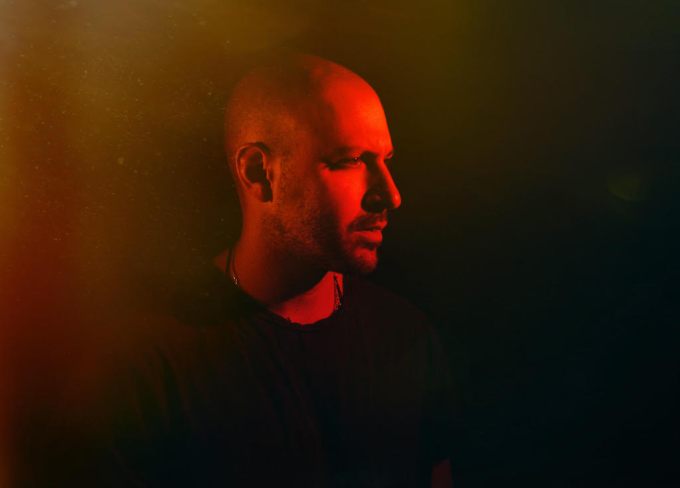
Image Credits: Shervin Lainez / Stationhead
While the company emphasizes the live experience (which Levison described as “the core value prop”), Stationhead also supports recording shows for listening later, and apparently 50% of users are listening to both live and recorded shows. It has also been beta testing a tipping feature that will allow broadcasters to monetize their shows.
Of course, you can’t talk about social audio without talking about Clubhouse, which was attracting 2 million active users each week in January, according to CEO Paul Davison. Levison suggested that the buzz around Clubhouse has also benefited Stationhead as potential acquirers and investors get more excited about social audio. And Star argued that the companies are taking very different approaches.
“It’s in the name Clubhouse, it’s exclusive,” Star said. “It’s about social climbing and getting closer to the stage. [Stationhead is] living in the world where Cardi B was excited to meet her fans. We are for the 99 percent.”
Update: I also reached out to app store intelligence company SensorTower for its latest download data. SensorTower told me that StationHead has been installed 349,000 times globally, compared to 16.3 million installs for Clubhouse. (StationHead says that about 35% of its users are on the web and therefore not tracked by SensorTower.)
Powered by WPeMatico
Meet Feels, a new French startup that wants to change how dating apps work. According to the company, scrolling through photos and reading descriptions tend to be boring experiences. Feels want to improve profiles so that navigating the app feels more like watching TikTok videos or browsing stories.
“For the past 10 years, there’s been little innovation in the industry,” co-founder and CEO Daniel Cheaib told me. “The reason why many people uninstall dating apps is that it’s boring. Profiles all look the same and we feel like we’re browsing a catalog.”
In that case, Cheaib is thinking about Tinder, but also other dating apps that feel like Tinder but aren’t exactly Tinder, such as Bumble, Happn, etc.
Feels’ founding team has spent two years iterating on the app to find out what works and what doesn’t. Now that retention metrics are where they’re supposed to be, the company is ready to launch more widely.
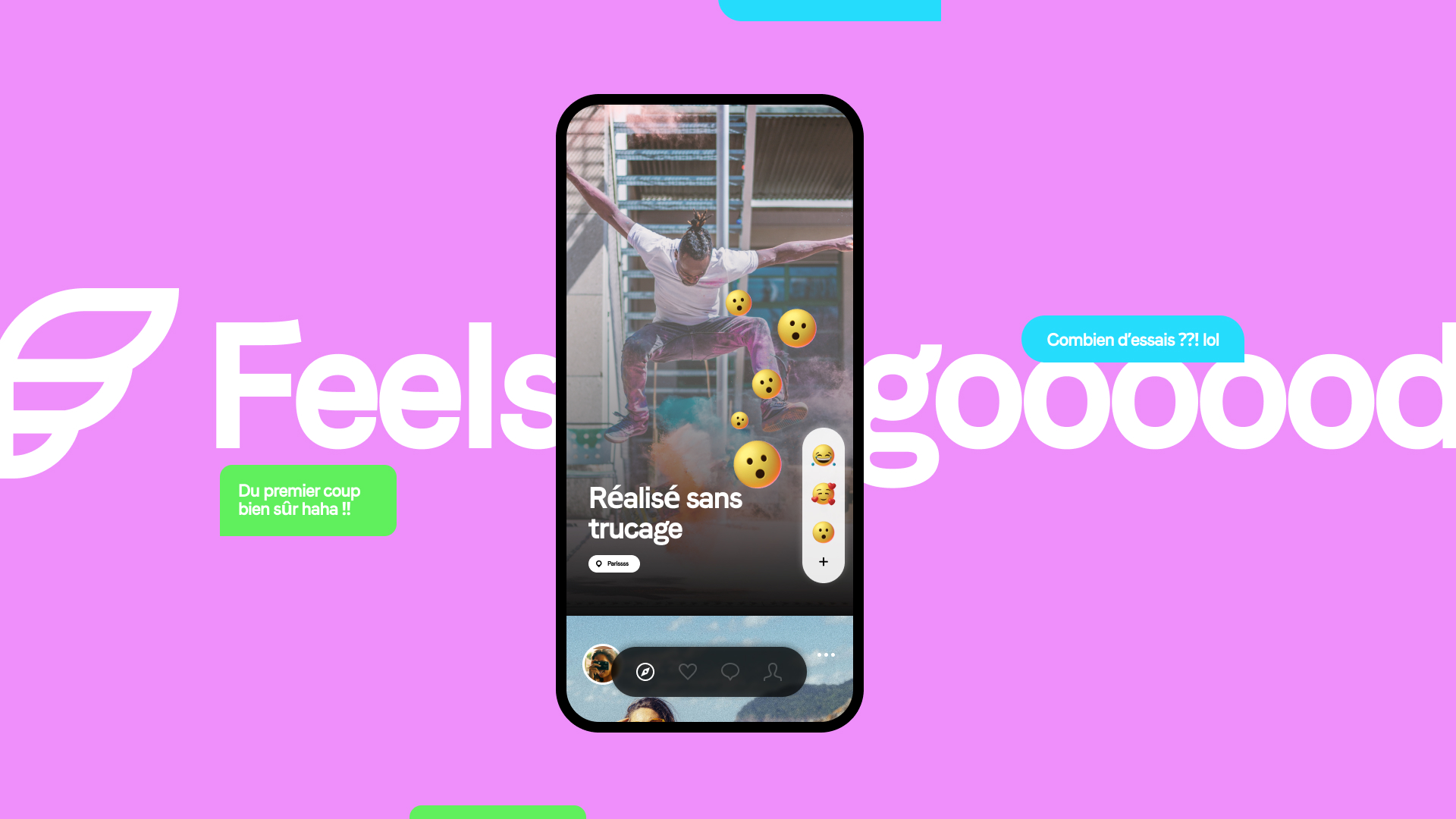
Image Credits: Feels
If you want to show interesting content to your users in a dating app, you have to rethink profiles. Arguably, this has been the most difficult part of the development phase. When you install the app, it takes around 15 minutes to create your profile.
At first, only 30% of new users finished the onboarding process. Now, around 75% of new users reach the end of the signup flow.
So what makes a profile on Feels different? In many ways, a profile looks more like a story, or TikTok posts. Users can record videos, add text and stickers, share photos, answer questions and more.
“When you’re done with the onboarding process, you have consistent profiles with people sharing content about them,” Cheaib said.
Like other dating apps, there are many options when it comes to gender identity — you’re not limited to woman or man. You can then say that you want to see all profiles or just some profiles based on various criteria.
After that, you can look at other profiles. Once again, Feels tries to change the basic interaction of dating apps. Most dating apps require you to swipe left or right, or give a thumbs up or a thumbs down. When you think about it, it’s a binary choice that requires a ton of micro decisions.
Sometimes, you don’t have any strong feelings about someone. Or maybe you just want to go to the next profile. And the fact that you have to triage profiles like this leads to a lot negativity, whether it’s conscious or subconscious — you keep rejecting people, after all.
When you’re looking at a profile on Feels, it fills up your entire screen. Videos start playing, you can see what the person likes and who they are in front of a camera. You can react on some content or you can simply move on by swiping up. There’s no heart or like button.
When the startup thought they finally were going somewhere, they raised a $1.3 million funding round (€1.1 million) from a long list of business angels, such as somebody in Atomico’s business angel program, Blaise Matuidi, Eric Besson, René Ricol, Ricardo Pereira, Yohan Benalouane, Nampalys Mendy, Julien Radic and Jean Michel Chami.
Now, Feels plans to attract new users with organic TikTok posts, some TV ads and more. The company wants to reach one million users by the end of the year with a big focus on France for now. There are 100,000 users right now.
When it comes to monetization, Feels started offering a premium subscription to unlock more features. The company is still iterating on that part.
Feels is just getting started in a crowded and competitive industry. Unlike other companies, Feels has invested heavily in its own product before working on user acquisition and paid installs. It’s an ambitious strategy but it has a lot of potential as it could lead to a truly different dating app.
Powered by WPeMatico
TikTok is taking another step toward directly funding publishers’ content with today’s announcement that it’s financially backing the production of media publisher NowThis’ new series, “VIRAL,” which will feature interviews with public health experts and a live Q&A session focused on answering questions about the pandemic. The partnership represents TikTok’s first-ever funding of an episodic series from a publisher, though TikTok has previously funded creator content.
Through TikTok’s Instructive Accelerator Program, which was formerly known as the Creative Learning Fund, other TikTok publishers have received grants and hands-on support from TikTok so they could produce quality instructive content for TikTok’s #LearnOnTikTok initiative. The program today is structured as four eight-week cycles, during which time publishers post videos four times per week.
NowThis had also participated in the Creative Learning Fund last year and was selected for the latest cycle of the Instructive Accelerator Program. But its “VIRAL” series is separate from these efforts.
NowThis says it brought the concept for the show to TikTok earlier this year outside of the accelerator program, and TikTok greenlit it. TikTok then co-produced the series and provided some funding. Neither NowThis nor TikTok would comment on the extent of the financial backing involved, however.
The “VIRAL” series itself is hosted by infectious disease clinical researcher Laurel Bristow, who spent the last year working on COVID treatments and research. Every Thursday, Bristow will break down COVID facts in easy-to-understand language, NowThis says, including things like vaccine efficacy, transmission timelines and treatment. The show will also bust COVID myths, provide information about ongoing public health risks and feature interviews with a cross-section of experts.
Each episode will be 45 minutes in length and will also include an interactive segment where the TikTok viewing audience will be able to engage in a real-time Q&A session about the show’s content. In total, five episodes are being produced, and will air starting on Thursday April 15 at 6 PM ET and will run through Thursday May 13 on the @NowThis main TikTok page.
@nowthisTune in to our new TikTok live show VIRAL on Thursdays at 6pm ET with host @kinggutterbaby♬ original sound – nowthis
NowThis has become one of the most-followed news media accounts on TikTok, with 4.6 million followers across its news and politics channels, since launching a little over a year ago. Because of its focus on video, it’s been a good fit for the TikTok’s platform.
The approach TikTok is taking with “VIRAL’s” production, it’s worth noting, stands in contrast to how other social media platforms are handling the pandemic and COVID-19 information. While most, including TikTok, have pledged to fact-check COVID-19 information, remove misinformation and conspiracies, point users to official sources for health information and provide other resources, TikTok is directly funding public health content featuring scientists and researchers, and then promoting it on its network.
The company explained to TechCrunch its thinking on the matter.
“As the pandemic continues to evolve, we think it’s important to provide our community an outlet to dispel misinformation and communicate with public health experts in real time,” said Robbie Levin, manager of Media Partnerships at TikTok. “NowThis has consistently been a great partner that produces engaging and informative content, so we felt this series would be an impactful and important avenue for our users to receive credible information on our platform,” Levin noted.
While the pandemic has driven the topic of choice here, paying creators for content is not new. And TikTok isn’t the only one to do so. Instagram and Snapchat are both funding creator content for their TikTok clones, Reels and Spotlight, respectively. And new social platforms like Clubhouse are funding creators’ shows, as well.
TikTok says it’s not currently talking to other publishers to produce more series like “VIRAL,” but it isn’t ruling out the idea of expanding its creator funding and producing efforts. In addition to its accelerator program, which is continuing, TikTok says if “VIRAL” proves successful and the community responds positively, it will pursue similar opportunities in the future.
Powered by WPeMatico
School closures due to the pandemic have interrupted the learning processes of millions of kids, and without individual attention from teachers, reading skills in particular are taking a hit. Amira Learning aims to address this with an app that reads along with students, intelligently correcting errors in real time. Promising pilots and research mean the company is poised to go big as education changes, and it has raised $11 million to scale up with a new app and growing customer base.
In classrooms, a common exercise is to have students read aloud from a storybook or worksheet. The teacher listens carefully, stopping and correcting students on difficult words. This “guided reading” process is fundamental for both instruction and assessment: It not only helps the kids learn, but the teacher can break the class up into groups with similar reading levels so she can offer tailored lessons.
“Guided reading is needs-based, differentiated instruction and in COVID we couldn’t do it,” said Andrea Burkiett, director of Elementary Curriculum and Instruction at the Savannah-Chatham County Public School System. Breakout sessions are technically possible, “but when you’re talking about a kindergarten student who doesn’t even know how to use a mouse or touchpad, COVID basically made small groups nonexistent.”
Amira replicates the guided reading process by analyzing the child’s speech as they read through a story and identifying things like mispronunciations, skipped words and other common stumbles. It’s based on research going back 20 years that has tested whether learners using such an automated system actually see any gains (and they did, though generally in a lab setting).
In fact I was speaking to Burkiett out of skepticism — “AI” products are thick on the ground and while it does little harm if one recommends you a recipe you don’t like, it’s a serious matter if a kid’s education is impacted. I wanted to be sure this wasn’t a random app hawking old research to lend itself credibility, and after talking with Burkiett and CEO Mark Angel I feel it’s quite the opposite and could actually be a valuable tool for educators. But it needed to convince educators first.
“You have to start by truly identifying the reason for wanting to employ a tech tool,” said Burkiett. “There are a lot of tech tools out there that are exciting, fun for kids, etc., but we could use all of them and not impact growth or learning at all because we didn’t stop and say, this tool helps me with this need.”
Amira was decided on as one that addresses the particular need in the K-5 range of steadily improving reading level through constant practice and feedback.
“When COVID hit, every tech tool came out of the woodwork and was made free and available,” Burkiett recalled. “With Amira you’re looking at a 1:1 tutor at their specific level. She’s not a replacement for a teacher — though it has been that way in COVID — but beyond COVID she could become a force multiplier,” said Burkiett.
You can see the old version of Amira in action below, though it’s been updated since:
Testing Amira with her own district’s students, Burkiett replicated the results that have been obtained in more controlled settings: As much as twice or three times as much progress in reading level based on standard assessment tools, some of which are built into the teacher-side Amira app.
Naturally it isn’t possible to simply attribute all this improvement to Amira — there are other variables in play. But it appears to help and doesn’t hinder, and the effect correlates with frequency of use. The exact mechanism isn’t as important as the fact that kids learn faster when they use the app versus when they don’t, and furthermore this allows teachers to better allocate resources and time. A kid who can’t use it as often because their family shares a single computer is at a disadvantage that has nothing to do with their aptitude — but this problem can be detected and accounted for by the teacher, unlike a simple “read at home” assignment.
“Outside COVID we would always have students struggling with reading, and we would have parents with the money and knowledge to support their student,” Burkiett explained. “But now we can take this tool and offer it to students regardless of mom and dad’s time, mom and dad’s ability to pay. We can now give that tutor session to every single student.”
This is familiar territory for CEO Mark Angel, though the AI aspect, he admits, is new.
“A lot of the Amira team came from Renaissance Learning. bringing fairly conventional edtech software into elementary school classrooms at scale. The actual tech we used was very simple compared to Amira — the big challenge was trying to figure out how to make applications work with the teacher workflow, or make them friendly and resilient when 6-year-olds are your users,” he told me.
“Not to make it trite, but what we’ve learned is really just listen to teachers — they’re the superusers,” Angel continued. “And to design for radically sub-optimal conditions, like background noise, kids playing with the microphone, the myriad things that happen in real-life circumstances.”
Once they were confident in the ability of the app to reliably decode words, the system was given three fundamental tasks that fall under the broader umbrella of machine learning.
The first is telling the difference between a sentence being read correctly and incorrectly. This can be difficult due to the many normal differences between speakers. Singling out errors that matter, versus simply deviation from an imaginary norm (in speech recognition that is often, effectively, American English as spoken by white people) lets readers go at their own pace and in their own voice, with only actual issues like saying a silent k noted by the app.
On that note, considering the prevalence of English language learners with accents, I asked about the company’s performance and approach there. Angel said they and their research partners went to great lengths to make sure they had a representative dataset, and that the model only flags pronunciations that indicate a word was not read or understood correctly.
The second is knowing what action to take to correct an error. In the case of a silent k, it matters whether this is a first grader who is still learning spelling or a fourth grader who is proficient. And is this the first time they’ve made that mistake, or the tenth? Do they need an explanation of why the word is this way, or several examples of similar words? “It’s about helping a student at a moment in time,” Angel said, both in the moment of reading that word, and in the context of their current state as a learner.
Third is a data-based triage system that warns students and parents if a kid may potentially have a language learning disorder like dyslexia. The patterns are there in how they read — and while a system like Amira can’t actually diagnose, it can flag kids who may be high risk to receive a more thorough screening. (A note on privacy: Angel assured me that all information is totally private and by default is considered to belong to the district. “You’d have to be insane to take advantage of it. We’d be out of business in a nanosecond.”)
The $11 million in funding comes at what could be a hockey-stick moment for Amira’s adoption. The round was led by Authentic Ventures II, LP, with participation from Vertical Ventures, Owl Ventures and Rethink Education.
“COVID was a gigantic spotlight on the problem that Amira was created to solve,” Angel said. “We’ve always struggled in this country to help our children become fluent readers. The data is quite scary — more than two-thirds of our fourth graders aren’t proficient readers, and those two-thirds aren’t equally distributed by income or race. It’s a decades-long struggle.”
Having basically given the product away for a year, the company is now looking at how to convert those users into customers. It seems like, just like the rest of society, “going back to normal” doesn’t necessarily mean going back to 2019 entirely. The lessons of the pandemic era are sticking.
“They don’t have the intention to just go back to the old ways,” Angel explained. “They’re searching for a new synthesis — how to incorporate tech, but do it in a classroom with kids elbow to elbow and interacting with teachers. So we’re focused on making Amira the norm in a post-COVID classroom.”
Part of that is making sure the app works with language learners at more levels and grades, so the team is working to expand its capabilities upward to include middle-school students as well as elementary. Another is building out the management side so that success at the classroom and district levels can be more easily understood.
The company is also launching a new app aimed at parents rather than teachers. “A year ago 100% of our usage was in the classroom, then three weeks later 100% of our usage was at home. We had to learn a lot about how to adapt. Out of that learning we’re shipping Amira and the Story Craft that helps parents work with their children.”
Hundreds of districts are on board provisionally — aided by a distribution partnership with Houghton Mifflin Harcourt, also an investor — but decisions are still being kicked down the road as they deal with outbreaks, frustrated parents and every other chaotic aspect of getting back to “normal.”
Perhaps a bit of celebrity juice may help tip the balance in their favor. A new partnership with Miami Dolphins (former Houston Texans) linebacker Brennan Scarlett has the NFL player advising the board and covering the cost of 100 students at a Portland, OR school through his education charity, the Big Yard Foundation — and more to come. It may be a drop in the bucket in the scheme of things, with a year of schooling disrupted, but teachers know that every drop counts.
Powered by WPeMatico
As expected, Southeast Asian superapp Grab is going public via a SPAC.
The combination, which TechCrunch discussed over the weekend, will value Grab on an equity basis at $39.6 billion and will provide around $4.5 billion in cash, $4 billion of which will come in the form of a private investment in public equity, or PIPE. Altimeter Capital is putting up $750 million in the PIPE — fitting, as Grab is merging with one of Altimeter’s SPACs.
Ride-sharing is a profitable business for Grab, though the segment did take a pandemic-induced whacking.
Grab, which provides ride-hailing, payments and food delivery, will trade under the ticker symbol “GRAB” on Nasdaq when the deal closes. The announcement comes a day after Uber told its investors it was seeing recovery in certain transactions, including ride-hailing and delivery.
Uber also told the investing public that it’s still on track to reach adjusted EBITDA profitability in Q4 2021. The American ride-hailing giant did a surprising amount of work clearing brush for the Grab deal. Extra Crunch examined Uber’s ramp toward profitability yesterday.
This morning, let’s talk through several key points from Grab’s SPAC investor deck. We’ll discuss growth, segment profitability, aggregate costs and COVID-19, among other factors. You can read along in the presentation here.
The impact on Grab’s operations from COVID-19 resembles what happened to Uber in that the company’s deliveries business had a stellar 2020, while its ride-hailing business did not.
From a high level, Grab’s gross merchandise volume (GMV) was essentially flat from 2019 to 2020, rising from $12.2 billion to $12.5 billion. However, the company did manage to greatly boost its adjusted net revenue over the same period, which rose from $1 billion to $1.6 billion.
Powered by WPeMatico
In 2019, Spotify began testing a hardware device for automobile owners it lovingly dubbed “Car Thing,” which allowed Spotify Premium users to play music and podcasts using voice commands that began with “Hey, Spotify.” Last year, Spotify began developing a similar voice integration into its mobile app. Now, access to the “Hey Spotify” voice feature is rolling out more broadly.
Spotify chose not to officially announce the new addition, despite numerous reports indicating the voice option was showing up for many people in their Spotify app, leading to some user confusion about availability.
One early report by GSM Arena, for example, indicated Android users had been sent a push notification that alerted them to the feature. The notification advised users to “Just enable your mic and say ‘Hey Spotify, Play my Favorite Songs.” When tapped, the notification launched Spotify’s new voice interface where users are pushed to first give the app permission to use the microphone in order to be able to verbally request the music they want to hear.
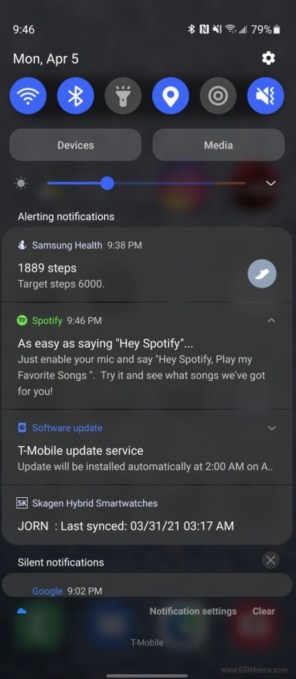
Image Credits: GSM Arena (opens in a new window)
Several outlets soon reported the feature had launched to Android users, which is only partially true.
As it turns out, the feature is making its way to iOS devices, as well. When we launched the Spotify app here on an iPhone running iOS 14.5, for instance, we found the same feature had indeed gone live. You just tap on the microphone button by the search box to get to the voice experience. We asked around and found that other iPhone users on various versions of the iOS operating system also had the feature, including free users, Premium subscribers and Premium Family Plan subscribers.
The screen that appears suggests in big, bold text that you could be saying “Hey Spotify, play…” followed by a random artist’s name. It also presents a big green button at the bottom to turn on “Hey Spotify.”
Once enabled, you can ask for artists, albums, songs and playlists by name, as well as control playback with commands like stop, pause, skip this song, go back and others. Spotify confirms the command with a robotic-sounding male voice by default. (You can swap to a female voice in Settings, if you prefer.)
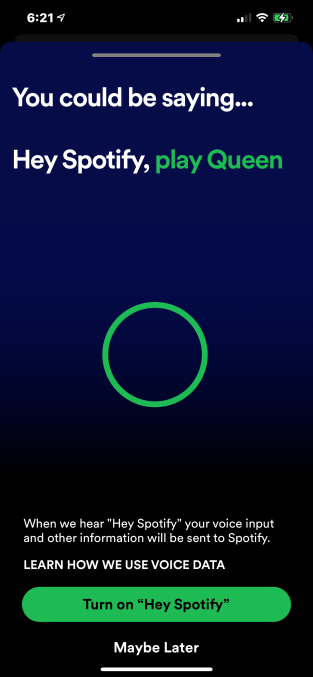
Image Credits: Spotify screenshot iOS
This screen also alerts users that when the app hears the “Hey Spotify” voice command, it sends the user’s voice data and other information to Spotify. There’s a link to Spotify policy regarding its use of voice data, which further explains that Spotify will collect recordings and transcripts of what you say along with information about the content it returned to you. The company says it may continue to use this data to improve the feature, develop new voice features and target users with relevant advertising. It may also share your information with service providers, like cloud storage providers.
The policy looks to be the same as the one that was used along with Spotify’s voice-enabled ads, launched last year, so it doesn’t seem to have been updated to fully reflect the changes enabled with the launch of “Hey Spotify.” However, it does indicate that, like other voice assistants, Spotify doesn’t just continuously record — it waits until users say the wake words.
Given the “Hey Spotify” voice command’s origins with “Car Thing,” there’s been speculation that the mobile rollout is a signal that the company is poised to launch its own hardware to the wider public in the near future. There’s already some indication that may be true — MacRumors recently reported finding references and photos to Car Thing and its various mounts inside the Spotify app’s code. This follows Car Thing’s reveal in FCC filings back in January of this year, which had also stoked rumors that the device was soon to launch.
Spotify was reached for comment this morning, but has yet been unable to provide any answers about the feature’s launch despite a day’s wait. Instead, we were told that they “unfortunately do not have any additional news to share at this time.” That further suggests some larger projects could be tied to this otherwise more minor feature’s launch.
Though today’s consumers are wary of tech companies’ data collection methods — and particularly their use of voice data after all three tech giants confessed to poor practices on this front — there’s still a use case for voice commands, particularly from an accessibility standpoint and, for drivers, from a safety standpoint.
And although you can direct your voice assistant on your phone (or via CarPlay or Android Auto, if available) to play content from Spotify, some may find it useful to be able to speak to Spotify directly — especially since Apple doesn’t allow Spotify to be set as a default music service. You can only train Siri to launch Spotify as your preferred service.
If, however, you have second thoughts about using the “Hey Spotify” feature after enabling it, you can turn it off under “Voice Interactions” in the app’s settings.
Powered by WPeMatico
Twitter held talks with Clubhouse around a potential acquisition of the live drop-in audio networking platform, with a deal value somewhere around $4 billion, according to a report from Bloomberg. TechCrunch has also confirmed the discussions took place from a source familiar with the conversations.
While the talks occurred over the past several months, they’re no longer taking place, though the reason they ended isn’t known according to the report. It’s also worth noting that just a few days ago, Bloomberg reported that Clubhouse was seeking to raise a new round of funding at a valuation of around $4 billion, but the report detailing the potential acquisition talks indicate that the discussions with Twitter collapsed first, leading to a change in strategy to pursue securing additional capital in exchange for equity investment.
Twitter has its own product very similar to Clubhouse — Spaces, a drop-in audio chatroom feature that it has been rolling out gradually to its user base over the past few months. Clubhouse, meanwhile, just launched the first of its monetization efforts, Clubhouse Payments, which lets users send direct payments to other creators on the platform, provided that person has enabled receipt of said payments.
Interestingly, the monetization effort from Clubhouse actually doesn’t provide them with any money; instead, it’s monetization for recipient users who get 100% of the funds directed their way, minus a small cut for processing that goes directly to Stripe, the payment provider Clubhouse is using to enable the virtual tips.
While we aren’t privy to the specifics of these talks between Twitter and Clubhouse, it does seem like an awfully high price tag for the social network to pay for the audio app, especially given its own progress with Spaces. Clubhouse’s early traction has been undeniable, but there are a lot of questions still remaining about its longevity, and it’s also being cloned left and right by other platforms, begging the age-old startup question of whether it’s a feature or a product on its own.
Whatever went down, the timing of this revelation seems likely to prime the pump for Clubhouse’s conversation with potential investors at its target valuation for the round it’s looking to raise. Regardless, it’s exciting to have this kind of activity, buzz and attention paid to a consumer software play after many years of what one could argue has been a relatively lackluster period for the category.
Powered by WPeMatico
Kavak, the Mexican startup that’s disrupted the used car market in Mexico and Argentina, today announced its Series D of $485 million, which now values the company at $4 billion. This round more than triples their previous valuation of $1.15 billion, which established them as a unicorn just a couple of months ago in October of 2020. Kavak is now one of the top five highest-valued startups in Latin America.
The round was led by D1 Capital Partners, Founders Fund, Ribbit and BOND, and brings Kavak’s total capital raised to date to more than $900 million. Kavak recently soft-launched in Brazil, and this new round of funding will be used to build out the Brazilian market and beyond, said Carlos García Ottati, Kavak’s CEO and co-founder. The company plans to do a full launch in Brazil in the next 60 days, García said, and we can expect to see Kavak in markets outside Latin America in the next 24 months, he added.
“We were built to solve emerging market problems,” García said.
Kavak, which was founded in 2016, is an online marketplace that aims to bring transparency, security and access to financing to the used car market. The company also offers its own financing through its fintech arm, Kavak Capital, and counts more than 2,500 employees and 20 logistics and reconditioning hubs in Mexico and Argentina.
“In Latin America, 90% of the [used car] transactions are informal, which leads to a 40% fraud rate,” said García, who experienced these challenges firsthand when he moved to Mexico from Colombia a couple of years ago and bought a used car.
“My budget allowed me to buy a used car, but there was no infrastructure around it. It took me six months to buy the car, and then the car had legal and mechanical issues and I lost most of my money,” he said. Kavak buys cars from individuals, refurbishes them and offers warranties to buyers.
“Instead of buying a new car, they can buy a better car that still has all the warranties. It’s a really aspirational process,” said García. The company, which really amounts to four companies in one given its areas of focus, was built to be comprehensive by design in order to meet the various gaps in the market, García said.
“When you’re building a business here [Latin America], you need to build several businesses because so many things are broken,” he said. That’s why the financing option, for example, has been a key to their success, according to García.
Financing has traditionally been hard to come by in Brazil, and as García said, the used car market lacks infrastructure there, too. That being said, Brazil is Latin America’s fintech hub, and the space has made leaps and bounds over the last 7-10 years with companies such as Nubank, PagSeguro, Creditas, PicPay, and others leading the way. As a result, credit cards and loans are more widely available today in the region, offering competition for Kavak Capital. While Kavak has localized some of its product for the Brazilian market — namely building out a Portuguese language version of the app and website — García said the markets are very similar.
“In Brazil, you still have the same problems that you have in Mexico, but Brazil is a little more developed, especially in fintech, which is light years ahead of Mexico,” he said.
With the Brazilian product heading to the races, García said they already have plans for other regions, though he declined to name them.
“80% of people in emerging markets don’t have access to a car,” García said of the global market size. “We want to go into big markets where customers are facing similar problems and where Kavak can really change their lives,” he added.
Powered by WPeMatico
Apple is sharing more details today about its upcoming App Tracking Transparency feature, which will allow users to control, on an app-by-app level, whether their data is shared for ad-targeting purposes.
In a sense, anyone using the current version of iOS can see App Tracking Transparency in action, since iOS already includes a Tracking menu in the Privacy settings, and some apps have already started asking users for permission to track them.
But when iOS 14.5 (currently in developer beta) is released to the general public sometime in early spring, Apple will actually start enforcing its new rules, meaning that iPhone users will probably start seeing a lot more requests. Those requests will appear at various points during the usage of an app, but they’ll all carry a standardized message asking whether the app can “track your activity across other companies’ apps and websites,” followed by a customized explanation from the developer.
Once an app has asked for this permission, it will also show up in the Tracking menu, where users can toggle app tracking on and off at any time. They also can enable app tracking across all apps or opt out of these requests entirely with a single toggle.
One point worth emphasizing — something already stated on Apple’s developer website but not entirely clear in media reports (including our own) — is that these rules aren’t limited to the IDFA identifier. Yes, IDFA is what Apple controls directly, but a company spokesperson said that when a user opts out of tracking, Apple will also expect developers to stop using any other identifiers (such as hashed email addresses) to track users for ad targeting purposes, and not to share that information with data brokers.
This does not, however, stop developers from tracking users across multiple apps if all those apps are operated by a single company.
The Apple spokesperson also said that Apple’s own apps will abide by these rules — you won’t see any requests from Apple, however, since it doesn’t track users across third-party apps for ad targeting purposes. (As previously noted, there’s a separate Personalized Ads option that determines whether Apple can use its own first-party data to target ads.)
Facebook has been particularly vocal in criticizing the change, arguing that this will hurt small businesses who use targeting to run effective ad campaigns, and that the change benefits Apple’s bottom line.
Apple has pushed back against criticism in privacy-focused speeches, as well as in a report called A Day in the Life of Your Data, which lays out how users are actually tracked and targeted. In fact, the report has just been updated with more information about ad auctions, ad attribution and Apple’s own advertising products — SKAdNetwork, which tracks app installs after ads are viewed, and Private Click Measurement, which tracks how ads drive users to websites (but uses on-device data processing).
Powered by WPeMatico